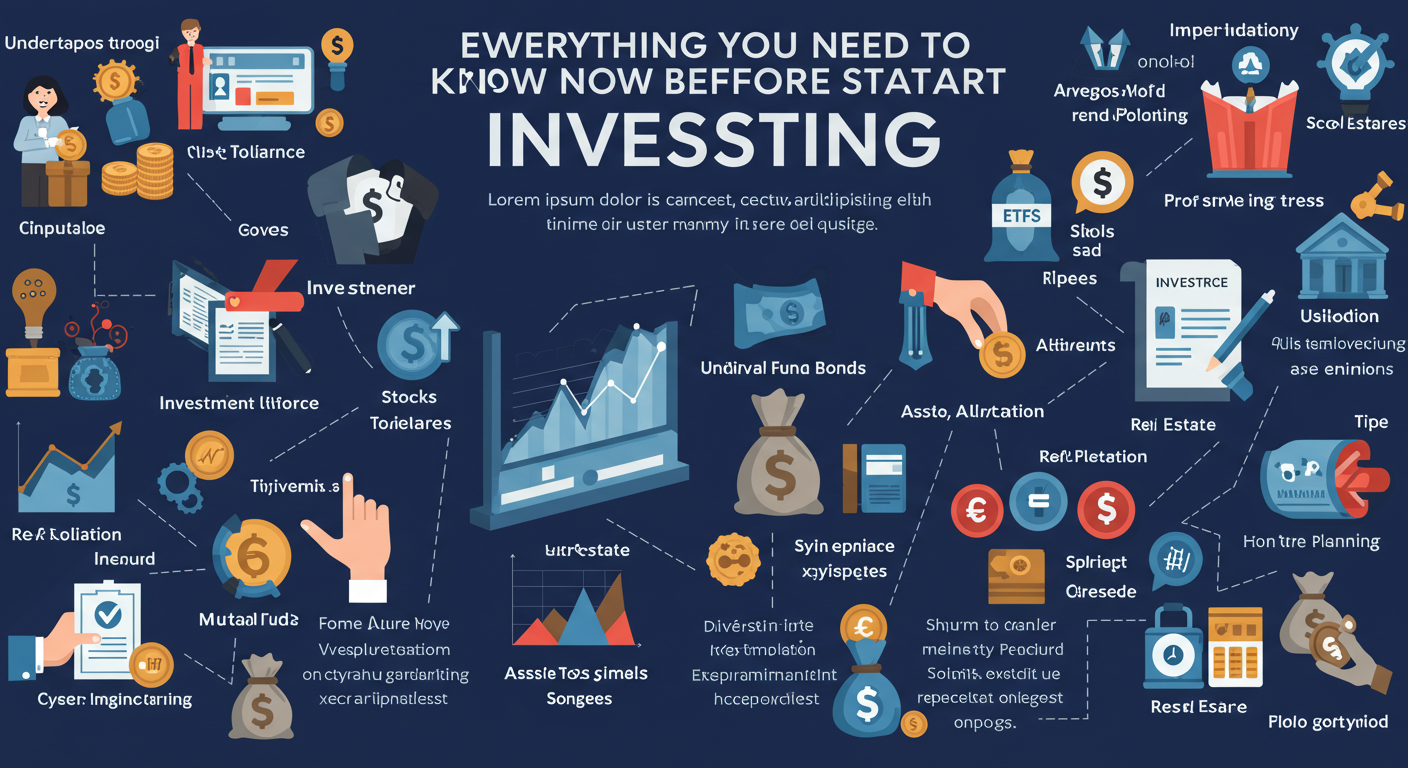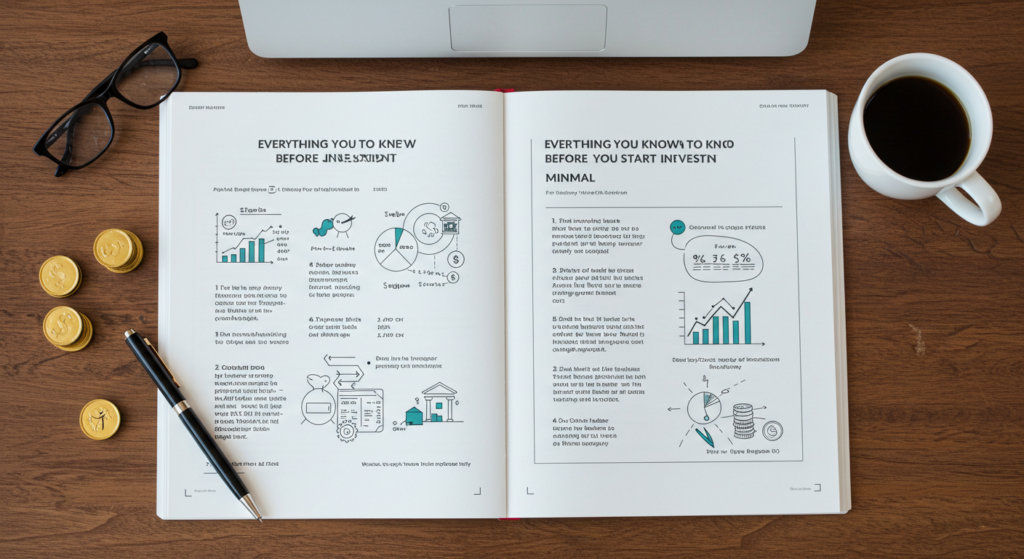Everything You Need to Know Before You Start Investing cryptocurrencies and stocks

Hey cousins and cousins-in-law, how are you all doing? Is everything going well in your lives? Here’s the thing: one of my life goals is to help people invest and take better care of their money. And what better way to do that than by bringing you everything you need to know before you start investing? So watch this video until the end, and you’ll understand everything before getting started. Don’t forget to click the like button, and don’t forget to subscribe to this channel—this is very important!

Step 1: Get Rid of the Excuses
The first thing you need is courage. It’s very easy to start investing. Everyone knows someone who has made excuses: “Oh, it’s too difficult,” “I don’t know where to start.” If you know someone like that, send them this video because I’m going to explain everything clearly for you.
To start, just download an app from any brokerage firm. From there, you link your brokerage account with your bank, and then you’re ready to invest. The first thing you need is access to a platform where you can invest. Everything is at your fingertips. Today, brokerages have apps that make it very easy.
Imagine how hard it was back in the 90s when people crowded together, shouting—it was pure chaos. You had to push people aside just to shout and close a deal. It was much harder back then!
Step 2: You Don’t Need to Be an Expert
If you haven’t started investing yet because you have no idea what to do, let me tell you something—you can use ETFs. ETFs are essentially funds that replicate indexes. The creator of ETFs, John Bogle, said in his book The Common Sense Investor (a nice red book) that the S&P 500 outperformed 90% of funds of its time over 15 years. Imagine that—he compared the U.S. index and found that it yielded more than 90% of all investments at the time.
It’s like you’re ahead of 90% of investors and even some of the best investment funds, but without doing anything—just investing in ETFs and waiting for the long term. So, if you lack knowledge or time, ETFs are a great way to invest in markets worldwide.
There are many different ETFs today, from the most common to the most unique. For example:
- BOVA11: An ETF for the Brazilian stock market
- IVVB11: An index tracking the S&P 500, the U.S. stock market
- URA: A uranium ETF
- PBD: A clean energy ETF
- MJ: A cannabis ETF
- HERO: An ETF for software, hardware, and gaming
- HASH11: A cryptocurrency ETF
Look at all these possibilities! And the best part? Many ETFs cost less than $10, so even with a small amount of money, you can invest and diversify your portfolio.

However, even though it’s simple, you won’t succeed even with ETFs if you don’t follow the next step.
Step 3: Principles Matter More Than Technical Knowledge
Have you heard of the Magellan Fund? This was Peter Lynch’s fund. Between 1977 and 1990, he had an average annual return of 29.2%—meaning he beat the S&P 500 every year. But here’s the crazy part: most of his investors lost money.
Why? Because they withdrew their investments when the market dropped. When the stock market falls, people get scared. Then, when the market rises, they think, “Oh, great, now it’s up,” and they invest—when in reality, they should do the opposite.
When people go to the supermarket, they love discounts—they prefer to buy a $10 chocolate for $6. But in the stock market, the opposite happens. People prefer when stock prices rise in the short term. The problem is that this prevents them from buying more shares and taking advantage of the snowball effect.
So let me ask you: Would you rather buy the same chocolate for $6 or $10? Of course, you’d pick the cheaper price—as long as the fundamentals remain strong.
People think the most important organ for an investor is the brain, but in reality, it’s the stomach—you need to handle market fluctuations.
Step 4: Watch Out for Fees
This is something you need to be very careful about. Many people make mistakes when investing because they don’t pay attention to fees.
If you invest, you must declare your income tax, whether you sell your stocks or not. Just to clarify, I’m talking about the tax declaration we have to file by April, not the tax you pay when selling stocks.
When selling stocks, you are exempt from tax if your sales do not exceed $2,500 per month. But for day trading, there is a 20% tax. Real estate funds also have a 20% tax on profits, with a minimum tax payment of $10.
Also, every time you trade too much, you incur costs. Some examples include:
- Brokerage fees
- Management fees (for certain funds)
- Performance fees (sometimes very high)
- Opportunity cost (when your money sits idle)
- Currency exchange spreads (for international investments)
So be careful! Many people think they’re making a great deal by investing abroad, but they forget about the high fees involved.
Step 5: You Can Be Among the Top 10%
If you’ve been following this channel for a wh


